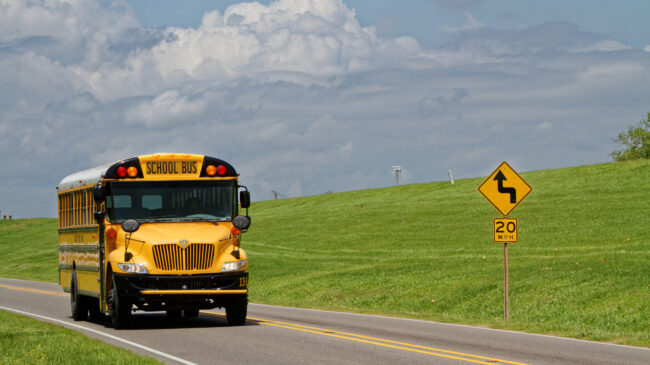Thus far in 2024, state policymakers have already introduced 32 proposals in 16 states that would expand schooling options for public school students by embracing K-12 open enrollment. This policy lets students attend schools other than their residentially assigned schools so long as seats are available.
Last year, open enrollment proposals were signed into law in six states, improving the education options for more than 1.3 million students. Unsurprisingly, open enrollment enjoys robust bipartisan support among parents with school-aged children, according to a December 2023 EdChoice-Morning Consult poll.
Despite its popularity with parents, open enrollment is sometimes fiercely opposed by public school advocates, especially those in rural areas. For instance, the Missouri Association of Rural Education and 175 Missouri school districts signed resolutions opposing a tepid open enrollment proposal last year.
One source of this opposition is the fear that residentially assigned students will leave their rural school districts for suburban and urban schools, resulting in declining student populations and budgetary crises for smaller, more rural districts.
However, the latest data released by Wisconsin’s Department of Public Instruction (DPI) showcasing the state’s robust open enrollment program should help waylay those fears. Wisconsin’s statewide open enrollment policy requires every school district with open seats to accept transfer students from other school districts.
During the 2022-23 school year, more than 73,000 students in Wisconsin used open enrollment. This represents 9% of the public school students statewide, a 3% increase from the previous school year.
While Wisconsin’s suburban school districts received the lion’s share, 34% of transfer students, the state’s rural school districts received the second largest share. Nearly 23,000, or 31% of Wisconsin transfer students transferred to rural school districts.
Table 1: Wisconsin Open Enrollment Transfers by Locale 2022-23 School Year
| Locale | Number School Districts | Transfers In by Locale | Percentage of Overall Transfers | Transfers Out by Locale | Percentage of Overall Transfers |
| City | 17 | 10,331 | 14% | 19,542 | 27% |
| Suburban | 77 | 25,020 | 34% | 17,211 | 23% |
| Town | 91 | 14,799 | 20% | 15,838 | 22% |
| Rural | 236 | 22,952 | 31% | 20,590 | 28% |
| Total | 421 | 73,280 | 100% | 73,280 | 100% |
Source: Wisconsin Department of Public Instruction (DPI), “Public School Open Enrollment in Wisconsin 2022-23,” December 2023; Institute of Educational Sciences, National Center for Education Statistics, “Locale Classifications.” DPI redacted data from 23 school districts because the number of students entering or leaving those districts was fewer than 20.
Rural school districts also lost students through open enrollment, but the number of new transfer students they received altogether was actually greater than the number of students leaving. This means that statewide enrollment in Wisconsin’s rural school districts increased by more than 2,300 students overall because of open enrollment.
The rural school districts that benefited the most from open enrollment were those the National Center for Education Statistics categorizes as “fringe“—rural regions nearest to an urban area. In fact, these school districts gained a net total of 2,666 transfer students from open enrollment.
“Remote” school districts—those districts furthest from urban areas (at least 25 miles from an urban area and at least 10 miles from an urban cluster)—also gained more students than they lost through open enrollment.
Only “distant” school districts lost more students than they gained from open enrollment, losing less than 360 transfer students across 110 school districts of this type.
Overall, 157 rural school districts in Wisconsin, or 67%, either had a net gain or experienced a net loss of less than 20 students through open enrollment.
Many Wisconsin rural school districts use open enrollment to attract new students. The funding that follows transfer students to the receiving district can help school districts remain fiscally solvent, especially those where local population growth is stagnant or declining.
At the same time, students use open enrollment for a variety of reasons. Approximately 35% of student transfers to rural school districts were those ranked as exceeding or significantly exceeding expectations, according to the 2022-23 District Report Cards published by the Wisconsin Department of Public Instruction. Almost all other rural transfer students, 63%, transferred to school districts that “meet expectations.”
Highly ranked public schools, however, aren’t the only reason Wisconsin students transfer to rural school districts. In some cases, students transfer to streamline their families’ commutes, to access smaller classes or specific schools that are a better fit for them, or to remain in their schools after moving out of the school district.
Wisconsin’s latest open enrollment data shows that open enrollment is a boon to school districts and students, including those living in rural areas. It helps students find the best public school for them and helps schools attract and retain students.

